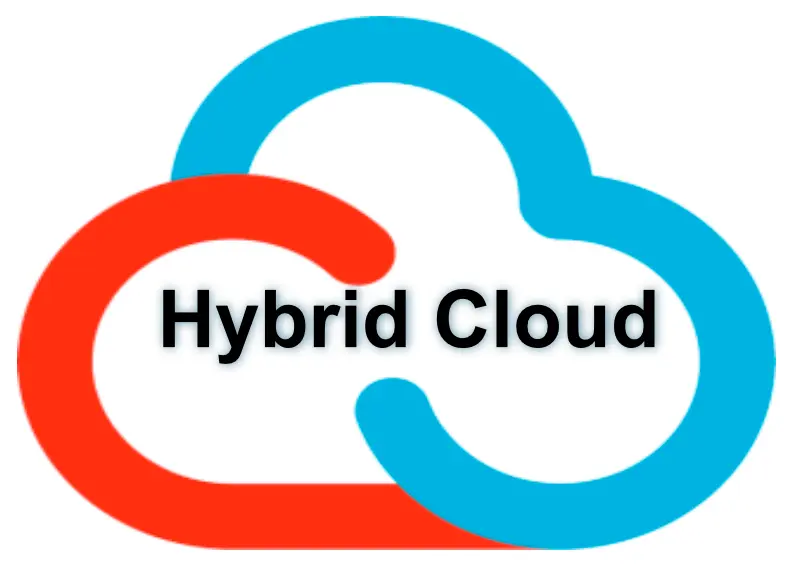HYBRID CLOUD: definition
The hybrid cloud combines private cloud, public cloud and on-premises infrastructure, enabling applications to be managed, arranged and moved between the three. As a result, a company can run and scale legacy or traditional operations on the most efficient IT architecture in a single, integrated and flexible cloud computing environment.
Hybrid multi-cloud is a hybrid cloud that combines public cloud services from multiple providers, enabling an enterprise to combine stand-alone cloud services and capabilities from a variety of cloud providers. Choose the best cloud platform for distinct applications, and move operations between public and private clouds as needed.

WORKING ON A HYBRID CLOUD
Traditional hybrid cloud architecture
Typically, hybrid cloud infrastructure was implemented by refurbishing elements of a company’s datacenter into an on-premises cloud provider, and connecting this architecture to cloud systems managed by an off-premises cloud service. This involved using a pre-defined hybrid cloud solution, or finding productive workflows to integrate cloud services across environments, as well as centrally managed tools to track, allocate and manage these assets from a single console. The result was a coherent IT architecture, well suited to a variety of scenarios:
SECURITY AND REGULATORY COMPLIANCE
Less sensitive applications can use public cloud resources more cost-effectively. Workflows and data preserve the capabilities of the cloud infrastructure behind the firewall for critical information and highly regulated activities.
SCALABILITY AND RESILIENCE
By adapting automatically and rapidly, the public cloud uses the cloud’s computing and storage resources at lower cost due to unforeseen traffic points, without affecting private cloud workflows (so-called “cloud bursting”).
RAPID ADOPTION OF THE LATEST TECHNOLOGIES
Accept or switch to modern SaaS (Software-as-a-Service) solutions without implementing new on-site technology, or integrate these solutions into existing applications without implementing innovative on-site technology.
ENHANCING EXISTING APPLICATIONS
Leverage public cloud facilities to enhance the user experience of existing applications or extend them to new devices.
VMware MIGRATION
Migrate existing on-premises capabilities to a virtualized public cloud structure to minimize the on-premises datacenter footprint and scale as needed without investing in additional hardware.
COST REDUCTION AND RESOURCE OPTIMIZATION
Run operations with constant capacity on the private cloud and transfer larger, unpredictable workloads to the public cloud; leverage the public cloud architecture to rapidly deploy validation and verification resources as needed.
